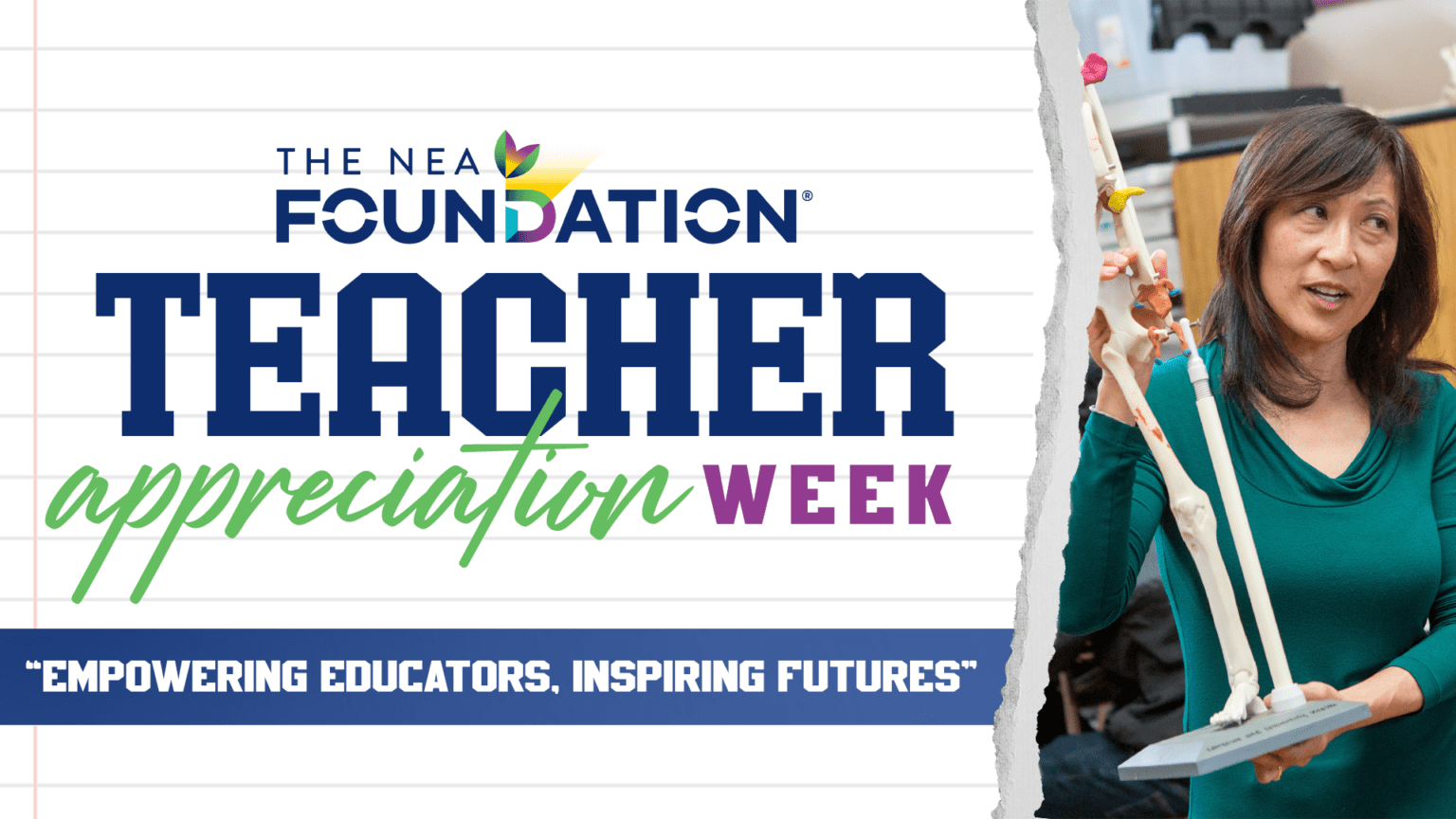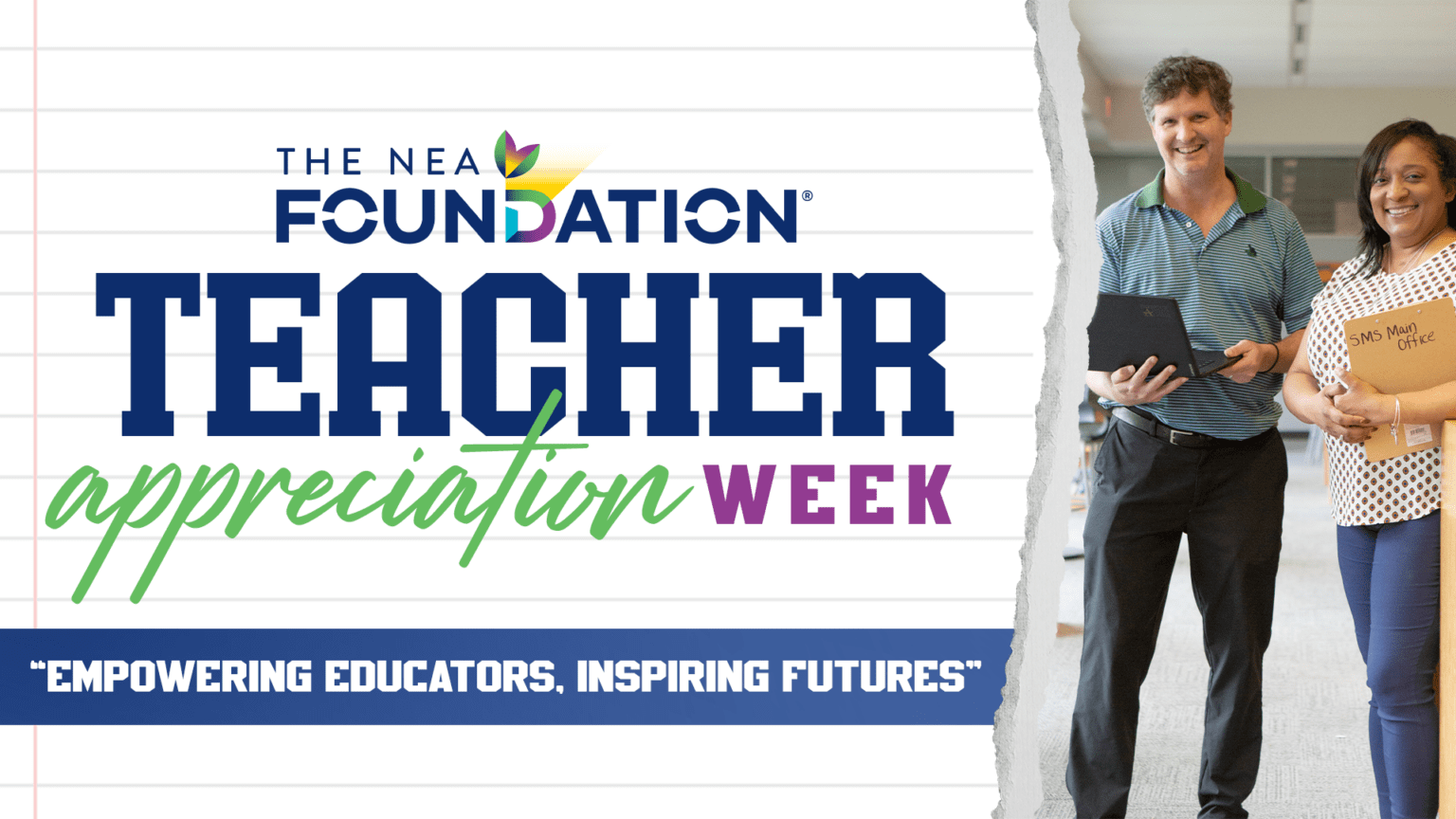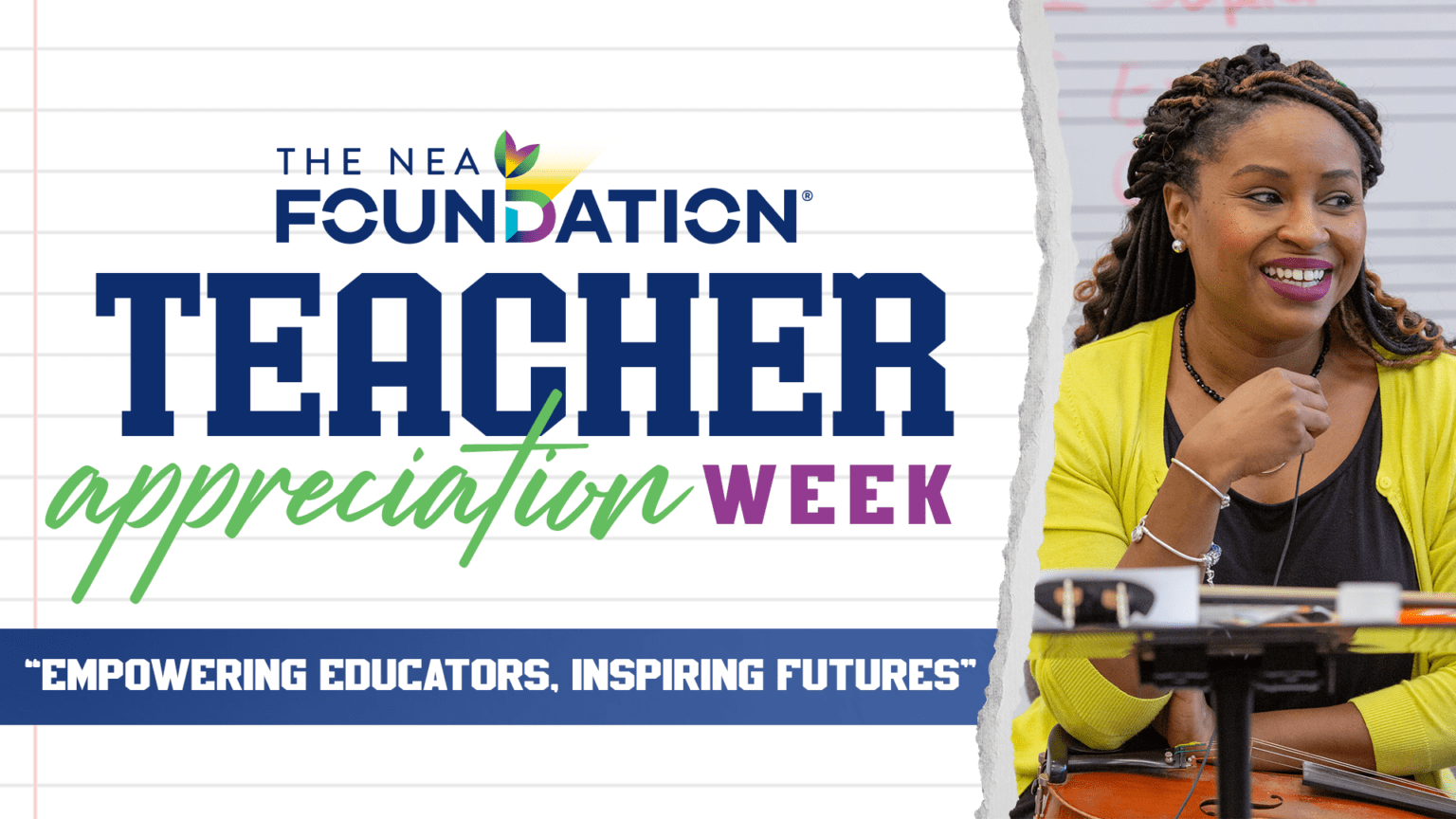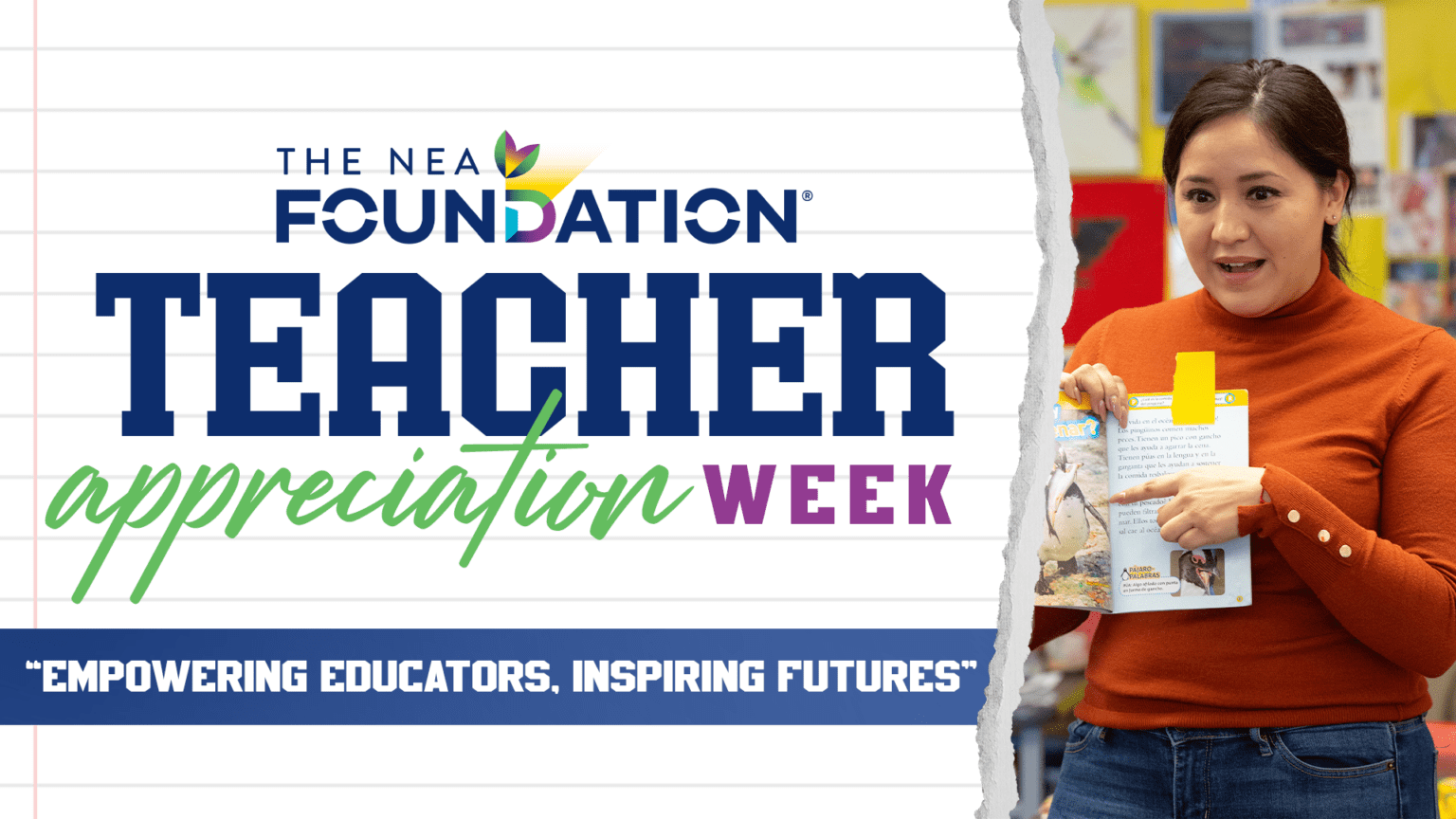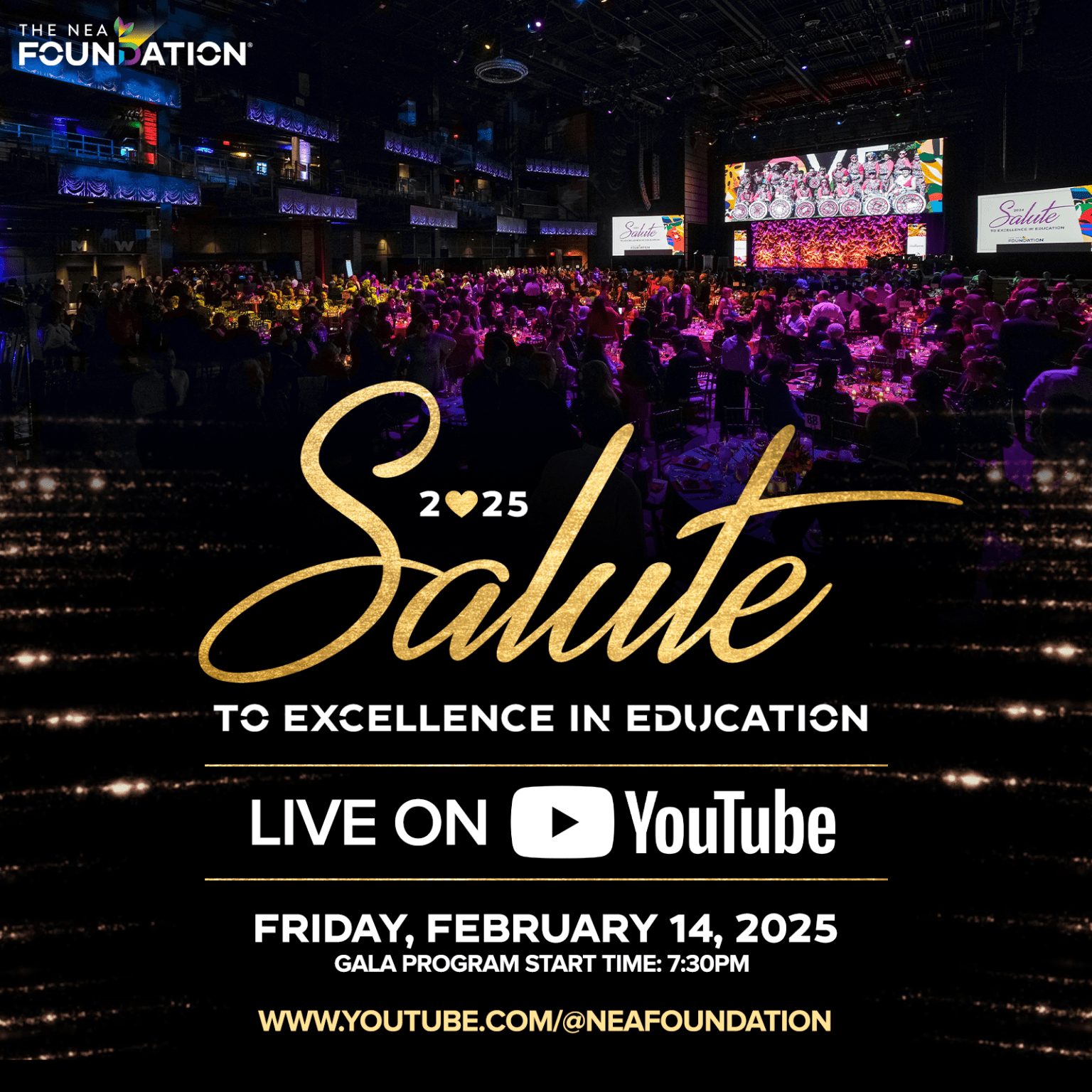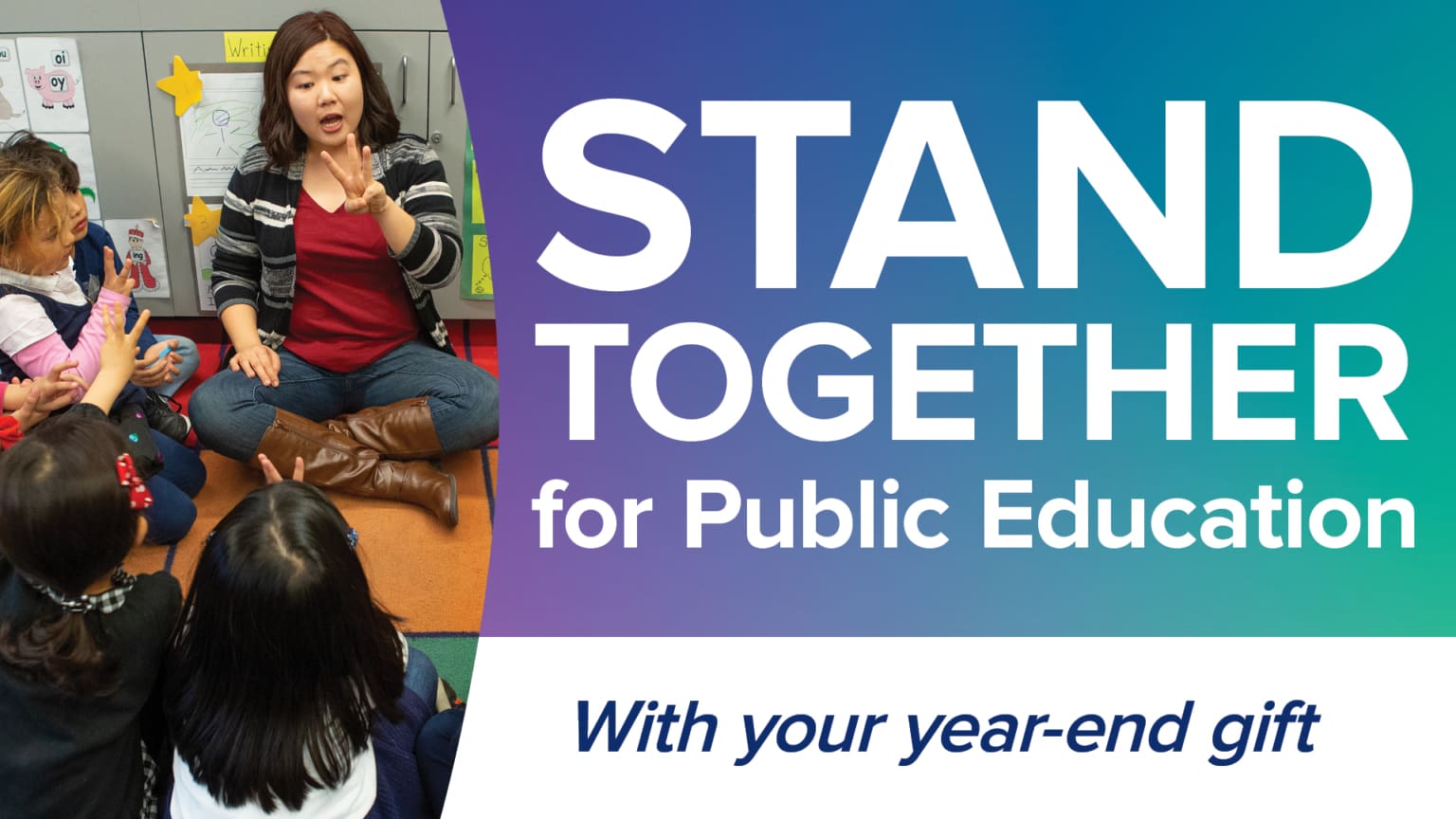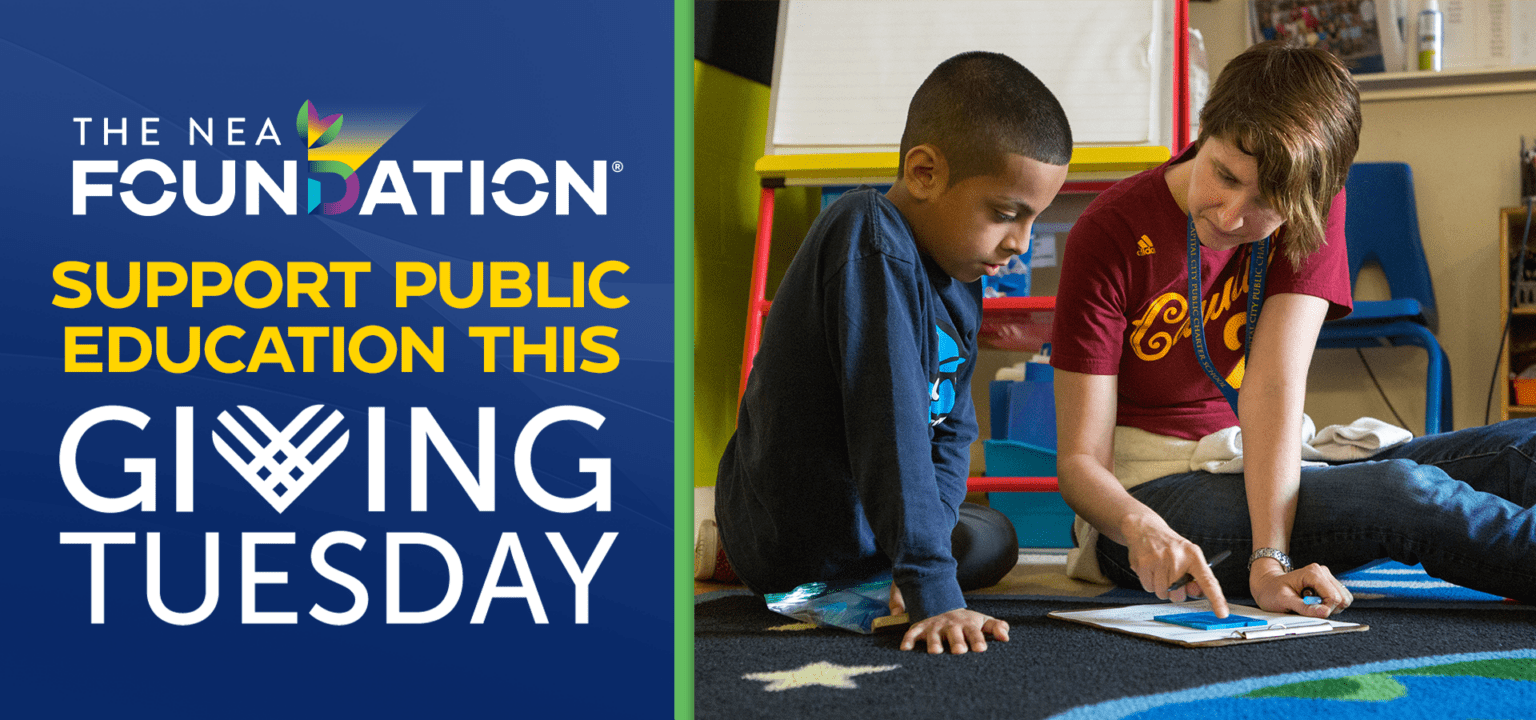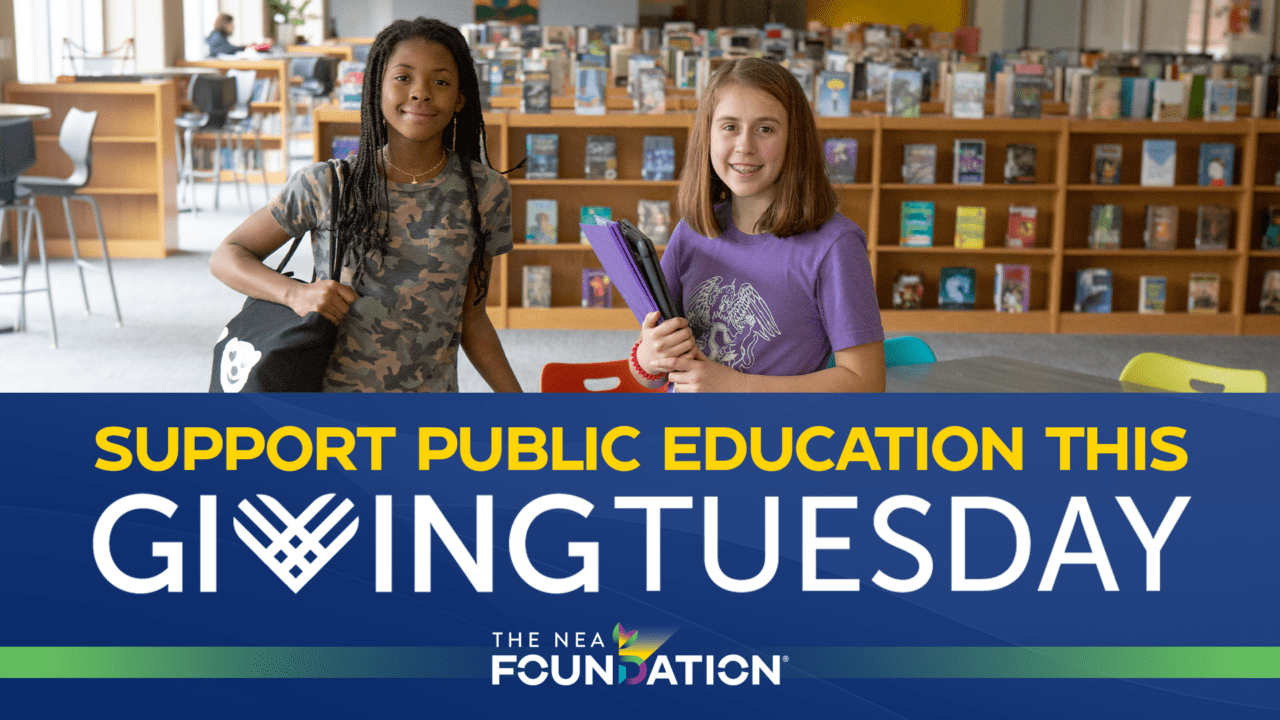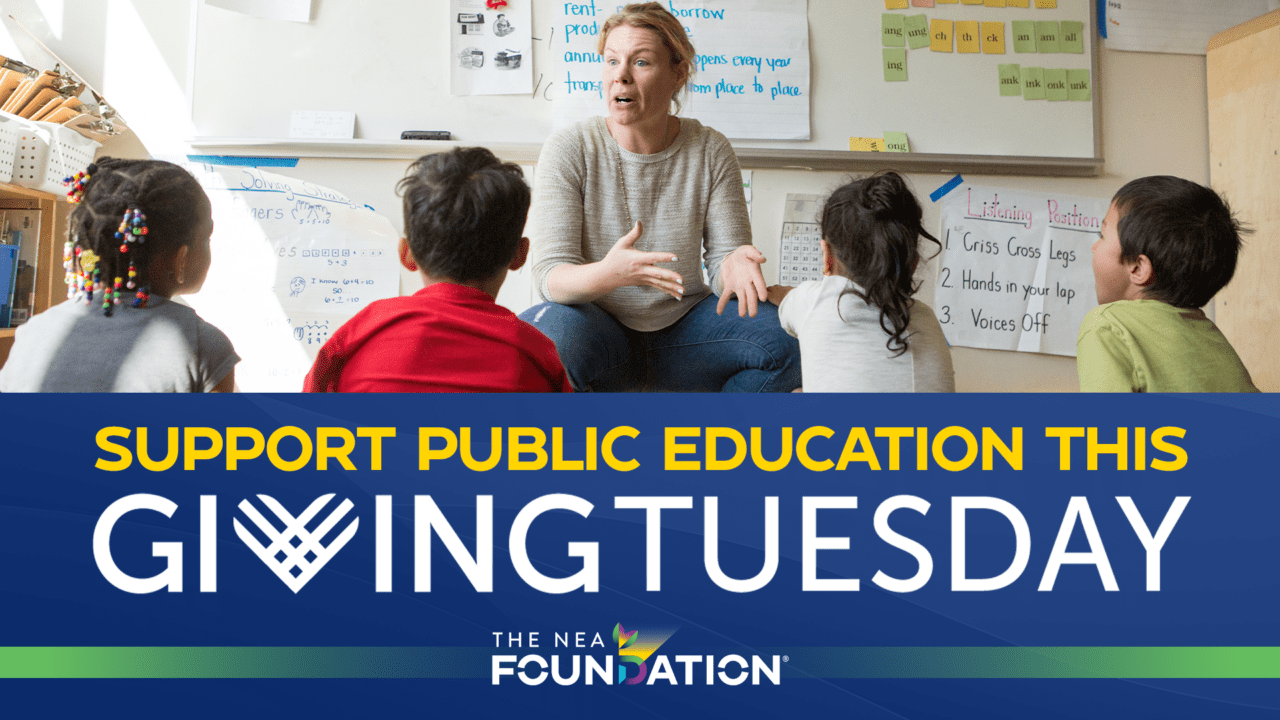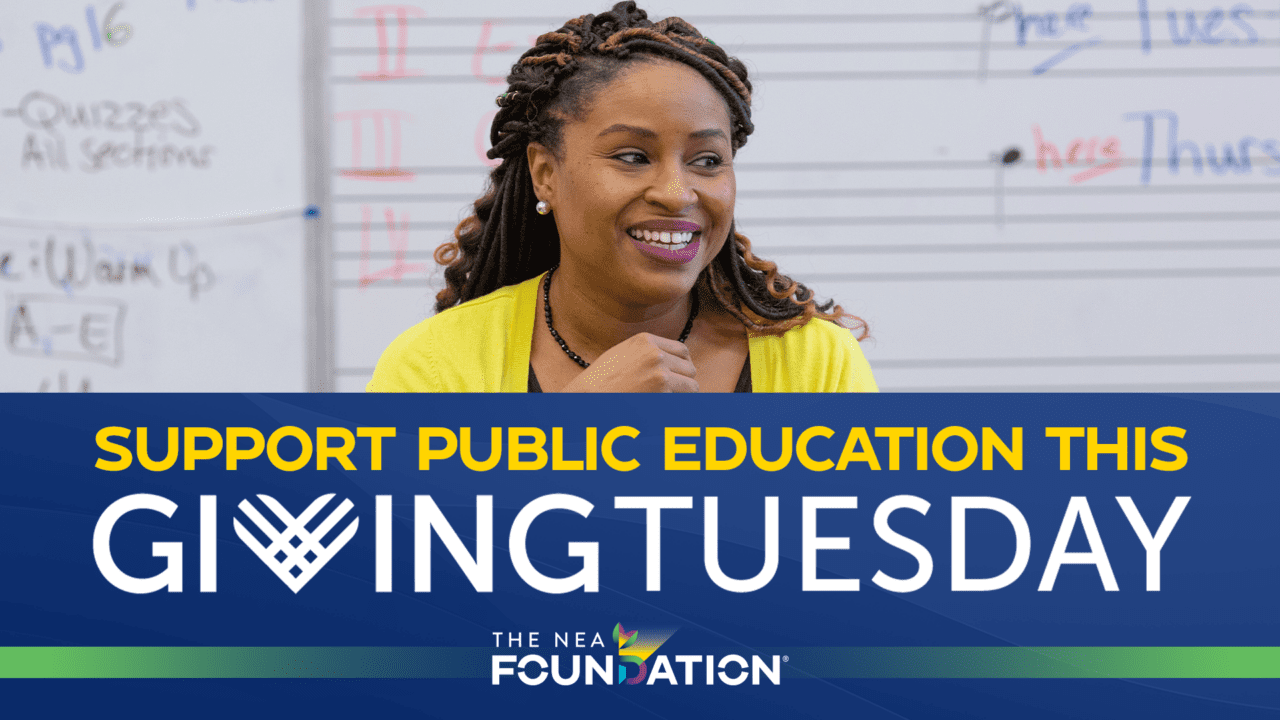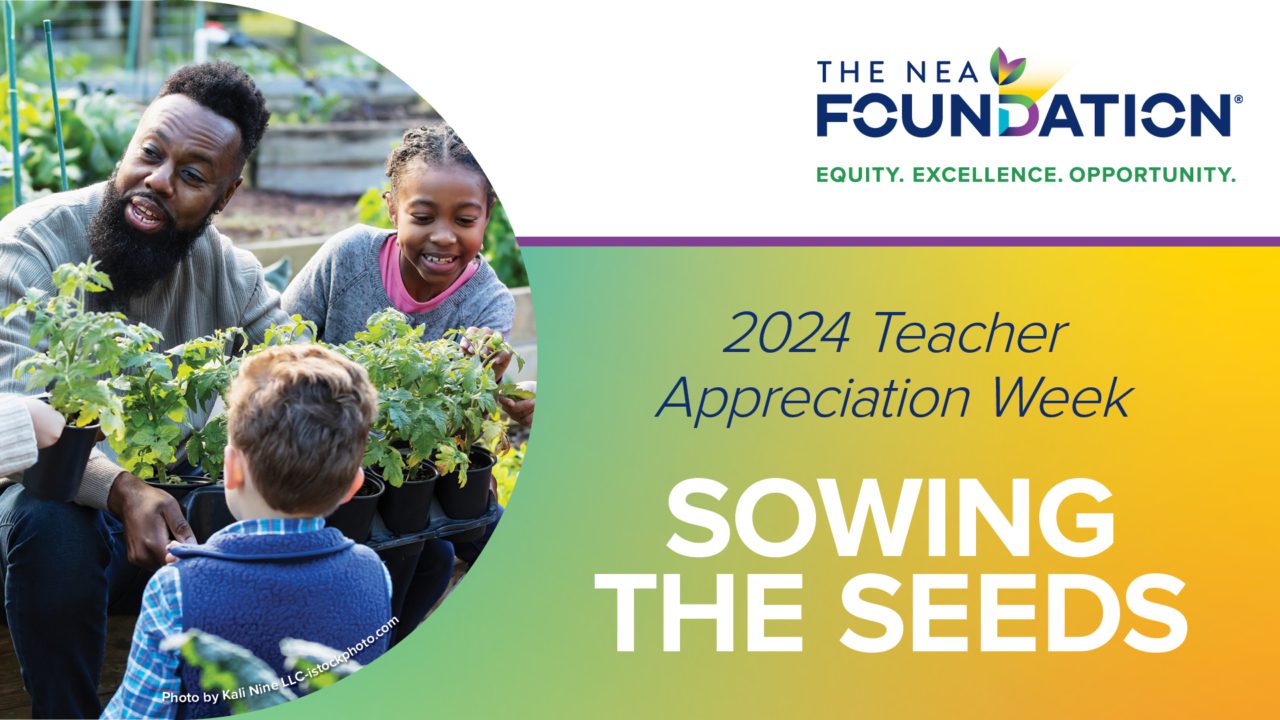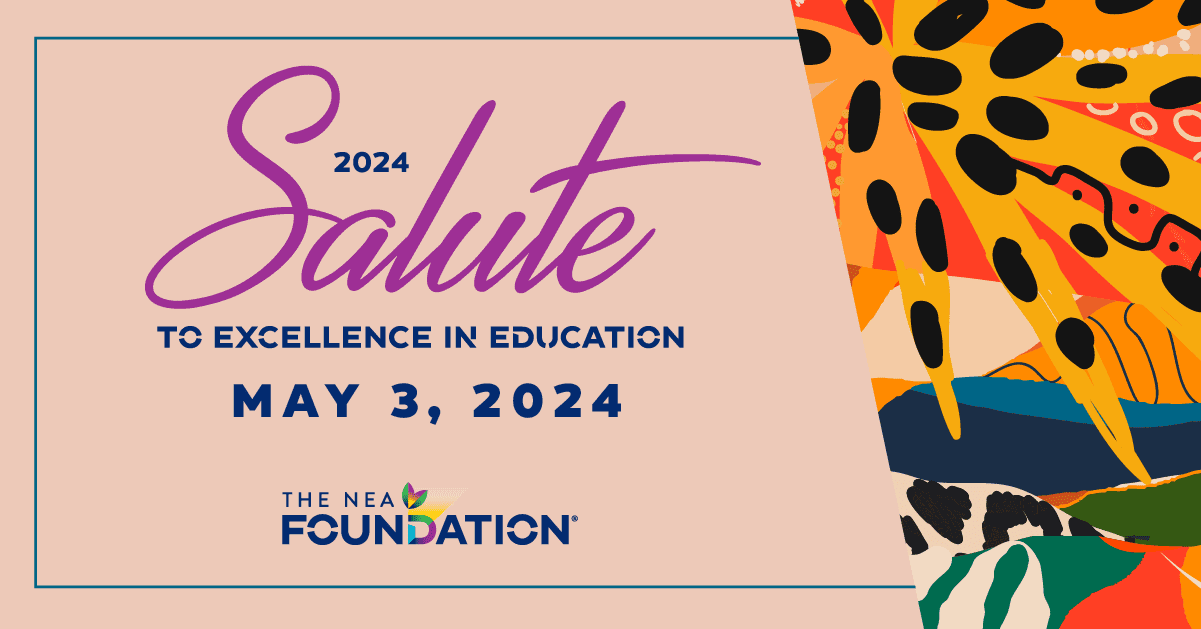Precious Crabtree is an art resource specialist and lead mentor teacher at Deer Park Elementary School in Centreville, Va. She also represents the Virginia Education Association on the NEA Board of Directors.
In 2015, she participated in the NEA Foundation Global Learning Fellowship – a year-long professional development program that helped her cultivate the skills to prepare her students for global citizenship.
During the Fellowship’s field study tour to Peru, Precious was able to explore the natural, educational, and artistic landscape of the country. Last Spring, she invited artists Pablo Seminario and Marilú Behar, whom she met during her field study in Peru, to visit her school and to meet and teach her students. We asked her about the artists’ visit and about her experience as an NEA Foundation Global Learning Fellow.
You can read about – or watch! – her experience below.
How did you meet Peruvian artists Pablo Seminario and Marilú Behar? How did your partnership come about?
In the summer of 2015, I participated in a field study in Lima and Cusco, Peru with 30 other U.S. public school educators as part of the NEA Foundation Global Learning Fellowship.
On the last day of our learning in Peru, we visited Pablo Seminario and Marilú Behar’s studio in the Sacred Valley in the Andes, near the city of Cusco. While there, we had an opportunity to meet Pablo and Marilú, and I was instantly drawn to their stories and their work. So I asked if they would work with our students and he said YES!!

How have your students worked with Pablo and Marilú?
Our students’ first interaction with Pablo was through the magic of Google Hangouts. Fifth grade students worked to create a list of questions that they wanted to ask the Peruvian artist. The classes paired up and we conducted two one-hour sessions with Pablo for the interview.
Pablo not only answered questions but also shared some of his work and the ancient artifacts that inspired it. This partnership led to other Google Hangouts sessions where Pablo modeled hand building techniques for clay. The kids watched with an eagerness to practice his techniques.
Tell us about Pablo and Marilú’s visit.
I was thrilled to receive a grant from the NEA Foundation to bring Pablo and Marilú to my school. When Pablo and Marilú arrived in April, almost two years after we first met in 2015, the collaboration and partnership had come full circle. He shared with all grade levels a little bit about his work, but then helped older students to create their own work. Students took away so much from this experience—as did I!
Pablo and Marilú’s visit provided us learning that went beyond our own lenses and perspectives. Sure, students learned about another culture—but their learning did not stop with obvious things like learning new techniques. They learned that global artists not only share their work around the world but also understand culture and address global issues in their work.
As one of my students put it, being a global artist means that “you can connect with more people from different places in the world. And you are able to tell stories through your artwork so that others are able to connect.”
How did your teaching change as a result of the Global Learning Fellowship?
First, I see my students, and how I connect with them, differently. I realized that I needed to go deeper with my lessons and allow more opportunities for students to share who they are culturally in their own work. As humans, we all need to be accepted and feel valued as individuals.
My love of stories and their role in my classroom was reinforced during the Fellowship. The people of Peru had such a strong sense of pride and presence about stories. I believe even more strongly now that young children should be exposed to literature, stories, artifacts, and art related to others both locally and globally.
Because of my stronger focus on where students come from, the kids are much more open-minded about others who seem different, and they ask more questions of each other to get deeper to gain a better understanding of the person sitting across from them.

What advice do you have for an educator trying to bring a global perspective to their classroom?
No matter what you teach, global education should be an intentional and important part of lesson planning and student learning. If I can incorporate it into my lessons, anyone can!
Bringing global perspectives to your classroom is not easy, and it takes looking deep inside your own views of the world and challenging your own preconceived notions. But the journey is one that makes your classroom richer and more inclusive!
Why is the NEA Foundation Global Learning Fellowship important?
Wow! There are so many reasons!!
Educators play an essential role in helping our youth understand citizenship, and the NEA Foundation provides the training and experiences for us to support our students’ growth in seeing the world through different lenses.
As educators, our reach is only as far as our life experiences and understanding of the world have taken us. Traveling to different parts of the world allows us to understand the reality of others’ lives. Being immersed in a culture was an awe-inspiring experience.
To learn more about the NEA Foundation Global Learning Fellowship, you can read past Fellows’ global stories. Want to incorporate global competence into your own lessons? Fellows have developed lesson plans for a range of levels and subjects that are available for free!
The application for the 2019 NEA Foundation Global Learning Fellowship is now open! Apply by February 5, 2018 for this opportunity to learn how to give a global perspective to your students.


